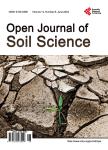Karun and Shatt Al-Arab River System: Historic and Modern Attempts to Manage Iran’s Lifeline
Karun and Shatt Al-Arab River System: Historic and Modern Attempts to Manage Iran’s Lifeline作者机构:Department of Natural Resources and Environmental Sciences College of Agricultural Consumer and Environmental Sciences University of Illinois Urbana USA EnviSoilCons Pr. Belgrade Serbia
出 版 物:《Open Journal of Soil Science》 (土壤科学期刊(英文))
年 卷 期:2024年第14卷第7期
页 面:416-447页
学科分类:030207[法学-国际关系] 03[法学] 0302[法学-政治学]
主 题:Shatt Al-Arab River Iraq Karun River Baghdad Sinjar Marshes Soil Tunnels
摘 要:The Islamic Republic of Iran’s principal rivers are the Karun and Shatt al-Arab. The Karun River has a 950 km length. The Karun River starting point is the convergence of the Amand, Kuhrang, and Bazoft rivers. From their headwater sources in the mountains of eastern Iran, these rivers descend through valleys and gorges and flow into the plains of Iran. The Shatt al-Arab River drains an area of 879,790 square kilometers which includes land in Iran, Syria, Türkiye, Kuwait, and Iraq. The Karun joins Shatt al-Arab 110 km downriver from the confluence of the Euphrates and Tigris Rivers and flows 85 km into the Persian Gulf. The Karun river flows in a southwestern direction through the central plain and provides about 10 per cent of the water balance of Iran’s largest wetland, the Shadegan, which includes permanent marshes, lakes, and riparian habitats. The article summarizes a vast array of publications on the stated topic and this civilizationally important region in order to draw additional attention to its interdependent environmental, economic and political problems the successful resolution of which is only possible with the participation of the entire research community.



